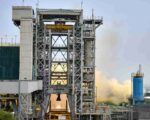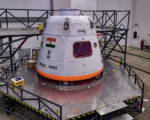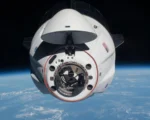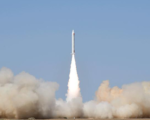Pragyan rover identifies a 160 km crater, potentially older than the South Pole-Aitken basin, enhancing our understanding of lunar geology.
Chandrayaan-3, India’s ambitious lunar mission, continues to push the boundaries of our knowledge about the moon. Launched by the Indian Space Research Organisation (ISRO), the mission has made significant strides in lunar exploration since its successful landing. Recently, data transmitted by the Pragyan rover revealed the existence of a 160 km wide ancient crater. This crater predates the South Pole-Aitken (SPA) basin, previously considered the moon’s oldest and largest impact structure. This remarkable discovery emphasizes the crucial role of Chandrayaan-3 in enhancing our understanding of lunar geological history.
Uncovering the Ancient Crater
The discovery was made possible through a meticulous analysis of data gathered by both the Vikram lander and the Pragyan rover. After successfully completing their primary mission on September 3, 2023, both the lander and rover entered sleep mode to conserve energy. A recent scientific paper from researchers at the Physical Research Laboratory (PRL) in Ahmedabad, including notable contributions from Dr. S. Vijayan, titled “Chandrayaan-3 landing site evolution by South Pole-Aitken basin and other impact craters,” has shed light on the significance of the crater. The research indicates that the Chandrayaan-3 landing site is located within a crater that was previously buried and is believed to be much older than the SPA basin, which is situated approximately 350 km from its rim.
A Detailed Analysis of the Landing Site
Utilizing the Pragyan rover’s navigation camera (Navcam) alongside a high-resolution optical camera, ISRO successfully captured detailed images of the region surrounding the landing site. This area exhibits a heavily degraded, semi-circular structure, which researchers now regard as one of the oldest geological features on the lunar surface. The analysis suggests that this ancient crater was likely obscured by ejecta materials from the SPA basin and other surrounding impact basins, offering a unique insight into the moon’s geological evolution.
Importance of the Discovery
This finding is monumental in the field of planetary science, as it not only alters our understanding of the moon’s impact history but also provides valuable context for future lunar exploration missions. By identifying features that predate the SPA basin, scientists can better understand the processes that shaped the moon’s surface and the chronological sequence of impact events. The implications of this discovery extend beyond the moon, potentially influencing our understanding of other celestial bodies with similar geological histories.
Future Exploration and Research
As researchers continue to analyze the data from Chandrayaan-3, they anticipate further insights into the moon’s geological history. The mission has opened new avenues for research, with scientists eager to explore the implications of the ancient crater on our understanding of lunar evolution. Future missions to the moon could build upon these findings, utilizing advanced technology to further investigate the geology and composition of these ancient features.
Conclusion: A New Era of Lunar Exploration
Chandrayaan-3 stands as a testament to India’s growing capabilities in space exploration. The successful identification of the ancient crater highlights the mission’s contributions to the global understanding of lunar science. As the scientific community continues to analyze the data from this groundbreaking mission, it is clear that Chandrayaan-3 has set the stage for a new era of lunar exploration, promising exciting discoveries that will enhance our understanding of not only the moon but also the broader cosmos.



















